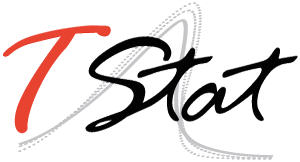Mata is Stata’s powerful extremely FAST built-in matrix compiled programming language, similar to R, Matlab and GAUSS. One of the main drawbacks in learning Mata however, is that the Reference Manual, whilst extremely detailed, offers little advice on how Mata can be actively implemented. The objective of our Gentle Introduction to Stata’s Programming Language Mata course is to offer participants a softer, but nonetheless extensive introduction into Mata’s programming capabilities. As such, the opening sessions offer a “guided tour of Mata” focusing on general considerations, such as when the use of Mata is either justified or warranted, offering participants an essential overview of Mata’s syntax and it’s principle commands. Later sessions illustrate Mata’s functions, built-in libraries and how Mata’s operators (such as functions, pointers and structures) and code can be effectively integrated in both user written and official Stata routines to obtain significant increases in the speed in which Stata is able to execute your work.
At the end of the course, it is expected that participants will be able to independently implement the techniques learnt during the course in order be able to use Mata to work more effectively in Stata. This course is, by its nature, to be considered very much a “hands-on/applied training course”. Each session is composed of both a theoretical component (in which the techniques are explained), and an applied (hands-on) segment, during which participants have the opportunity to implement the techniques under the watchful eye of the course tutor. Throughout the course, theoretical sessions are reinforced by practical examples, in which the course tutor discusses and highlights potential pitfalls and the advantages of individual programming techniques.
Researchers in any field interested in learning Stata’s programming matrix language. Ph.D. students and researchers interested in extending their existing knowledge of Mata.
A good knowledge of do files programming and a basic knowledge of ado files programming is required. The knowledge of alternative “low-level” and matrix programming languages may greatly enhance the understanding of more advanced topics like pointers, structures and classes.
SESSION I: MATA’S TOUR I
Obtaining help
Assignments
Mata’s variables: scalars, vectors, and matrices
Useful (built-in) functions
Null vectors and matrices
SESSION II: MATA’S TOUR II
Operators
Subscripting
Errors
SESSION III: MATA’S FUNCTIONS
Expressions, conditional and looping statements
Variable types
st_interface and I/O functions
Mata’s mechanics: do and ado-files integration
SESSION IV: ADVANCED PROGRAMMING
Pointers and Structures
SESSION V: OPTIMIZATION
The optimize suite
The moptimize suite
COURSE REFERENCES
An Introduction to Stata Programming, Christopher F. Baum, Second Edition, Stata Press 2016
The Mata Book: A Book for Serious Programmers and Those Who Want to Be, William Gould, Stata Press 2018
We are currently putting the finishing touches to our 2024 training calendar. We therefore ask that you re-visit our website periodically or contact us at training@tstat.it should the dates for the course which you are interested in following not yet be published. You will then be contacted via email as soon as the dates are available.
ONLINE FORMAT
The objective of our Gentle Introduction to Stata’s Programming Language Mata course is to offer participants a softer, but nonetheless extensive introduction into Mata’s programming capabilities.
